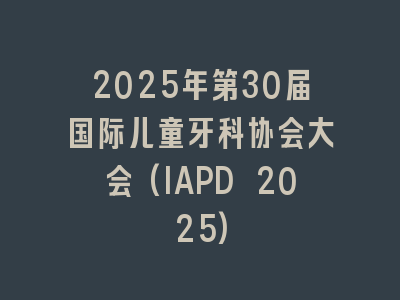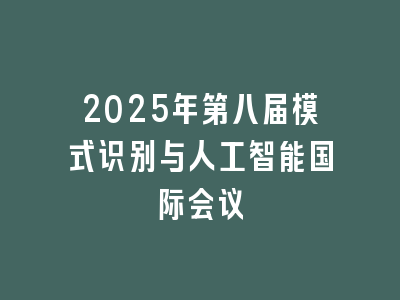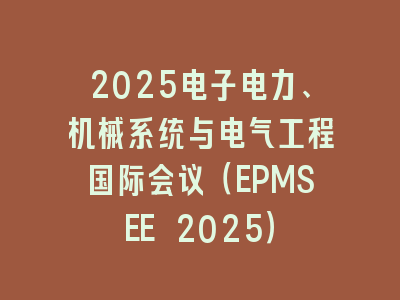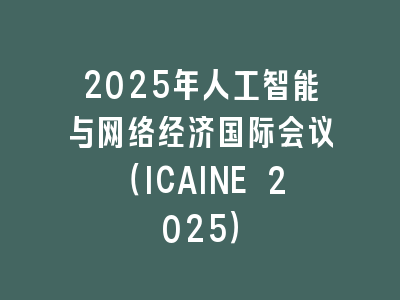
|
◆ 会议时间:2025年10月22-25日
◆ 会议简介: 2025年第30届国际儿童牙科协会(IAPD)大会将于2025年10月22-25日在南非开普敦举行,本次会议由国际儿童牙科协会(IAPD)、南非儿童牙科协会(SAAPD)联合组织,预计有超过1200名代表参会。 国际儿童牙科协会(IAPD)成立于1969年,原名为IADC(国际儿童牙科协会),1991年京都会议期间,IADC更名为IAPD(国际儿科牙科协会)。IAPD现拥有69个国家学会会员和超过2000名个人会员,并通过其会员协会代表着15000多名牙医。IAPD目的是建立一个有关儿童牙科国际信息交流的平台;宣促进儿童口腔健康学科的进步和发展,并鼓励在这一领域的研究;组织科学会议。未经许可禁止复制摘录转载本站任何内容-国际医学会议网(lingyuint.com). 30th Congress of International Association of Paediatric Dentistry (IAPD 2025) Date: 22-25 October 2025 Ornganized by:
摘要征文投稿: Abstract Submission opens 21 January 2025 Abstract submission closes 19 April 2025 Notification to abstract presenters 6 June 2025
General Guidelines
FormatElectronic poster presentations only that will require the presenter to stand beside their electronic poster while an audience asks questions/has a conversation with the presenter. Oral presentations will be part of the program, where presenters will have 5minutes to deliver their presentation, followed by a brief Q&A Submission Guidelines – Presentation TypePoster and Oral Abstracts may be presented either a poster or oral presentation format. Poster (Poster presentations will present a rapid talk while standing at their electronic poster while an audience is gathering around to ask questions during a break, will be allocated and you are required to be present at all times. E Posters will be presented throughout the conference on a screen). Oral There will be part of the program, where presenters will have 5minutes to deliver their presentat Submission Guidelines – Author (s) InformationInclude each authors’ last name and first initial (e.g. Drummond B,); bold the presenting author’s name; do not include academic degrees. Below the author(s)’ information, list: Department, University/Hospital, City, Country.(If all authors have same affiliation, there is no need to have superscript numbers.) Submission Guidelines – Abstract TitleEach word should begin with a capital letter except transition words; titles should not be longer than 20 words. Submission Guidelines – Abstract Structure | Abstract BodyPlease structure your abstract using the following headings: Submissions should not exceed 300 words (not including title, or section headings). References are not required in the abstract.
*Tables, graphs and images are permitted within submissions (maximum 2). Case Report structure includes: — Introduction: Definition of the disease or condition. — Case Report: Findings, treatment/methods, findings from follow-up period.. — Conclusion: Conclusions and potential Implications.
Example OneOral Microbiota Changes in Children Undergoing Comprehensive Dental Treatment for Severe Early Childhood Caries Kamalendran N¹, Drummond B², Heng, N., Cullinan M¹ ¹Department of Oral Sciences, Faculty of Dentistry, University of Otago, Otago, New Zealand, 2 Paediatric Dentistry, School of Dentistry, University of Leeds, Leeds, UK
Background: Severe Early Childhood Caries (S-ECC) is a leading oral health problem affecting the quality of life of many preschool children. Despite preventive and restorative approaches to manage S-ECC, these children remain at high risk of recurrent dental caries. The purpose of this study was to examine, the oral microbiomes of children before and after comprehensive restorative and preventive dental treatment for S-ECC using next-generation DNA sequencing technology. Methods: Plaque samples were collected from thirty 2–6-year-old children with S-ECC (dmfs>6) and thirty caries-free (control) children. Children in the S-ECC group were sampled immediately before treatment, 2 week and 3 months post-treatment. Bacterial 16S rRNA genes were specifically amplified by PCR from each plaque sample and sequenced using Ion Torrent™ technology. Results: Sequence analyses enabled the detection of 103 bacterial species. The most prevalent species in the S-ECC group were Streptococcus mitis, Villanella dispar, Streptococcus mutans, and Streptococcus orals. Conversely, some species including Actinomyces and Rothia were detected at higher levels in the control. Despite a reduction in the proportions of certain species after comprehensive restorative treatment, no statistically significant differences were observed in bacterial profiles between the time points of each participant in the S-ECC group. Conclusion: Comparing the oral mictobiota before and after comprehensive restorative dental treatment revealed little overall change in bacterial composition. The results however highlighted a unique response of each participant’s microbiota following dental treatment.
Example TwoA Case Series of Surgical Repositioning in Managing Inverted Impacted Incisors of Young Patients Chia-En T.¹, Liu MH¹, Tsiang ML¹, Lin YW², Tzong-Ping T.3 ¹Department of Dentistry, Chang Gung Memorial Hospital, Taipei, Taiwan ²Division of Pediatric Dentistry, Taipei Veteran General Hospital, Taipei Taiwan ᶾDepartment of Pediatric Dentistry, Wan Fan Medical Centre, Taipei Taiwan
Introduction: Management of inverted impacted incisors in growing patients is a great challenge to clinicians. Conventional treatment options include combined surgical exposure and orthodontics, extraction with prosthetic replacement and extraction with tooth auto-transplantation. Surgical repositioning, or trans-alveolar auto-transplantation, of the inverted incisor has been reported to greatly simplify the treatment. The purpose of the report is to present the long-term follow-up results of the surgical repositioning approach. Case report: A case series of sixteen inverted impacted maxillary incisors were treated by eight different dentists. After adequate space was created, the involved incisor was uncovered and surgically repositioned in correct direction with semi-erupted position. One to four months after the surgery, fixed orthodontic appliance was used to bring the incisor into proper alignment. All impacted incisors were successfully aligned with good periodontal conditions. Pulp canal obliterations were noted in 44% of the treated incisors. Three out of all treated incisors received endodontic treatment. 75% of the repositioned incisors showed continuing root development. Conclusion: The present report showed consistent and successful results of surgical repositioning could be obtained from multiple operators. The surgical repositioning modality may serve as an option of treating difficult impacted incisors in growing patients. *Submission of an abstract acknowledges your acceptance for the abstract to be published in all official Global Summit publications, as deemed appropriate by the Summit’s Scientific Committee. Including but not limited to, journal publication, digital publications on the IAPD website, meeting’s digital application, and hard copy publications for onsite delegates.
Dear Colleagues and Friends, On behalf of the International Association of Paediatric Dentistry (IAPD) and the South African Association of Paediatric Dentistry (SAAPD), we take great pleasure in inviting you to join us for the 30th IAPD Congress – taking place for the first time on the African continent – from 22-25 October 2025 in Cape Town, South Africa. We’re immensely excited to host you in our beautiful country, as we explore new frontiers in Paediatric Dentistry under the theme “Refresh – Refocus – Renew” Refresh – Refocus – RenewPaediatric Dentistry as part of holistic, patient-centred health care. The golden thread through this congress theme and slogan is how we as paediatric dentists should refresh, refocus and renew our approach to providing patient-centred, holistic oral health care. This theme also links to focused research in Oral Health-Related Quality of Life (OHRQoL) which is a multi-dimensional construct that includes a subjective evaluation of the individual’s oral health, functional well-being, emotional well-being, expectations and satisfaction with care and sense of self. Especially in children, impaired oral health and function can affect growth and development- not only physical but also emotional, social and psychological. Decisions made and treatment done on a child can have life-long consequences. It is, therefore, our duty to step up to the challenges of paediatric dentistry, to consult and collaborate with each other, different specialists and medical professionals to make sure we care for the ‘whole child’ and not only the child’s teeth. The 3-day scientific program will be comprehensive, catering for all special interests pertaining to paediatric dentistry: Day 1, focusing on Diagnosis & Behaviour Management will Refresh your knowledge on the aetiology and diagnosis of disease and pathology, Refocus you on the well-being of your patient and yourself through behaviour management techniques, and Renew your approach to providing inter- or multidisciplinary oral health care. Day 2, with a special focus on Holistic Oral Health care, will Refresh your understanding of caries, Refocus your care plans on holistic health care and Renew your approach to patient-specific oral rehabilitation with the newest technology and advances. Day 3 will Refresh your knowledge of modern dentistry and available technology, Refocus on tooth preservation and Renew your approach to providing care as a paediatric dentist. Paediatric dentistry requires a balance of knowledge, skills, patience and personality! The social program will create opportunities for interaction, relaxation, collaboration and just some plain African fun under the African sun! The ultimate goal is for each attendee to leave feeling “refreshed, refocused and renewed” in order to support each other, across local and International borders, in making paediatric dentistry a cornerstone of providing holistic healthcare to our children. We can’t wait to see you in Cape Town! Dr Marietjie Weakley
© 版权声明 本文由分享者转载或发布,内容仅供学习和交流,版权归原文作者所有。如有侵权,请留言联系更正或删除。 相关文章 暂无评论... |



